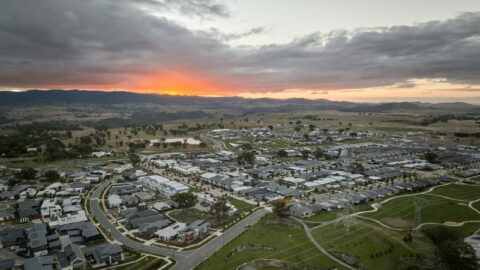Transgrid has announced it is establishing several Biodiversity Stewardship Agreements (BSAs) – including one of the biggest in New South Wales’ history – in an effort to protect native flora and fauna across the state.
The BSAs are designed to offset the biodiversity impact of most of Transgrid’s $1.8 billion EnergyConnect interconnector – the nation’s largest transmission project – from Wagga Wagga to the South Australian border.
Transgrid has also signed Memorandums of Understanding with the owners of another three sites totalling 6,800ha in south-west New South Wales to investigate additional BSAs.
Transgrid Chief Executive Officer, Brett Redman, said, “Transgrid is leading the transition to a clean energy future, and this gives us the opportunity to be at the forefront of preserving New South Wales’ valuable biodiversity.
“We are committed to making a positive contribution to our social licence and leaving a lasting legacy in communities where we operate.”
The company said its transmission projects provide opportunities to preserve biodiversity on large swathes of land in New South Wales, including protecting valuable habitat and one of Australia’s most endangered birds. It comes as the company has updated its Biodiversity Strategy to ensure a coordinated approach to minimising ecological impacts.
Transgrid is finalising the BSA on an 8,700ha property in southwestern New South Wales ensuring the protection of five threatened species of flora and fauna, including the critically endangered Plains-wanderer and a threatened ecological community of Weeping Myall.
The property has a mix of native grasslands and red clay habitats occupied by a significant population of Plains-wanderer birds. It also adjoins a national park, increasing the conservation area.
The New South Wales Government has also approved the company’s first BSA on a 6,600ha property called Big Bend at Rufus near the New South Wales–Victoria border. This BSA is designed to protect four threatened species of flora, including the largest population of the critically endangered Desert Hopbush.
“These key sites have been extensively studied by the experts and management plans are being put in place to protect and enhance significant species and their habitats in perpetuity,” Mr Redman said.
Transgrid is also calling for expressions of interest from landowners for potential BSAs as part of its HumeLink project which will connect Wagga Wagga, Bannaby and Maragle.
“We are inviting landowners to partner with us on this important journey,” Mr Redman said.
Featured image: Transgrid’s BSA property. Courtesy of Transgrid.
















